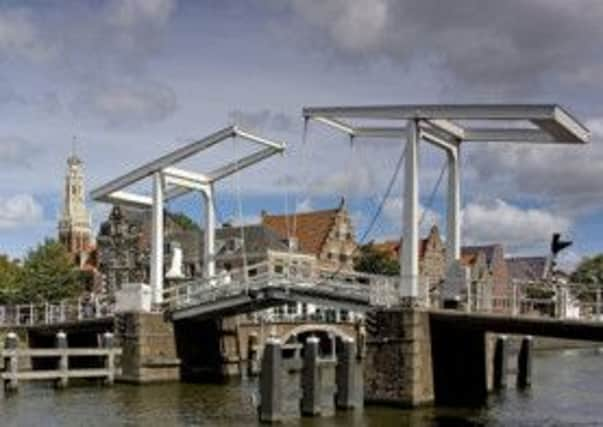Travel: Little Haarlem is big in character


One of the city’s tallest landmarks, the striking tower of Grote of Sint Bavokerk (St Bavo’s Church), is visible for miles around. Haarlem lies on the river Spaarne and has a historic city centre with many attractions including the Frans Hals Museum and Teylers Museum.
Haarlem’s history begins in Roman times, as a settlement along a through road to Velsen, a Roman garrison town. In the 10th century, a wooden Church of Our Lady and large stone house of the Count of Holland were built in Grote Markt square.
Advertisement
Advertisement
The settlement continued to grow around this centre. In 1245, Count Willem II (William II) of Holland granted privileges to Haarlem. From then on, Haarlem became one of the most important cities in Holland. In the Early Modern Period, Haarlem developed itself industrially as a center for textiles, brewing and, culturally, as a city of painters. In addition, Haarlem was also known for shipbuilding.
During the Eighty Years’ War, Haarlem strongly opposed Spanish rule. In 1577, the Spanish left the city and it once again came under the rule of William of Orange. In the period after this, many Flemish settled in the city, often industrious people with much expertise, capital and many trade relations.
Their arrival instigated a new period of growth for the Haarlem linen industry. Frans Hals, Haarlem’s most famous painter from the Golden Age, was also born in Flanders.
The Flemish architect Lieven de Key became city master builder in 1593 and built the Vleeshal (Meat Hall) in Grote Markt square, designed renovations to Grote Kerk (St Bavo’s Church) and built the tower of Nieuwe Kerk (New Church).
Advertisement
Advertisement
In 1631, the construction of the canal between Haarlem and Amsterdam was begun, followed in 1657 by the canal between Haarlem and Leiden. The first Dutch train ran between Amsterdam and Haarlem in 1839, and in 1843, the railway was extended to Leiden.
Although Haarlem was already being overshadowed economically in the Golden Age by big brother Amsterdam, it continued to be a favoured place to live and stay for the rich and powerful.
Both Louis Napoléon Bonaparte and Princess Wilhelmina, mother of King William I, took up residence at Paviljoen Welgelegen (Pavilion Welgelegen), the current provincial government building.
The rich history and Flemish influences are still evident in the city today. So unsurprisingly, the old city centre of Haarlem is registered as a listed cityscape.
Advertisement
Advertisement
The oldest museum in Holland, Teylers was founded in the eighteenth century and still exudes the atmosphere of that time. Built in 1784 to house exhibits legated by Pieter Teyler, a wealthy banker and merchant, it has hardly changed since.
Exhibits are shown in historical display cases, which are lit only by daylight. The museum has a vast and varied collection from fossils, minerals, scientific instruments, coins, medals, books, prints, paintings or drawings including many by Rembrandt.
The Frans Hals Museum celebrated its 100th anniversary in 2013. The museum’s collection of Haarlem Old Masters of the Golden Age, including the world’s largest collection of paintings by Frans Hals, is unique.
The Frans Hals Museum’s collection, encompasses the entire spectrum of 16th- and 17th-century painting. Frans Hals (c. 1582 – 1666), the most famous painter of the Golden Age to work in Haarlem, specialised in painting people.
Advertisement
Advertisement
Many wealthy citizens of Haarlem, and even one or two from Amsterdam, commissioned him to paint their portraits. For the open market he made paintings of less prominent people: the village idiot, drunkards, laughing fishermen and children playing the flute or smoking.